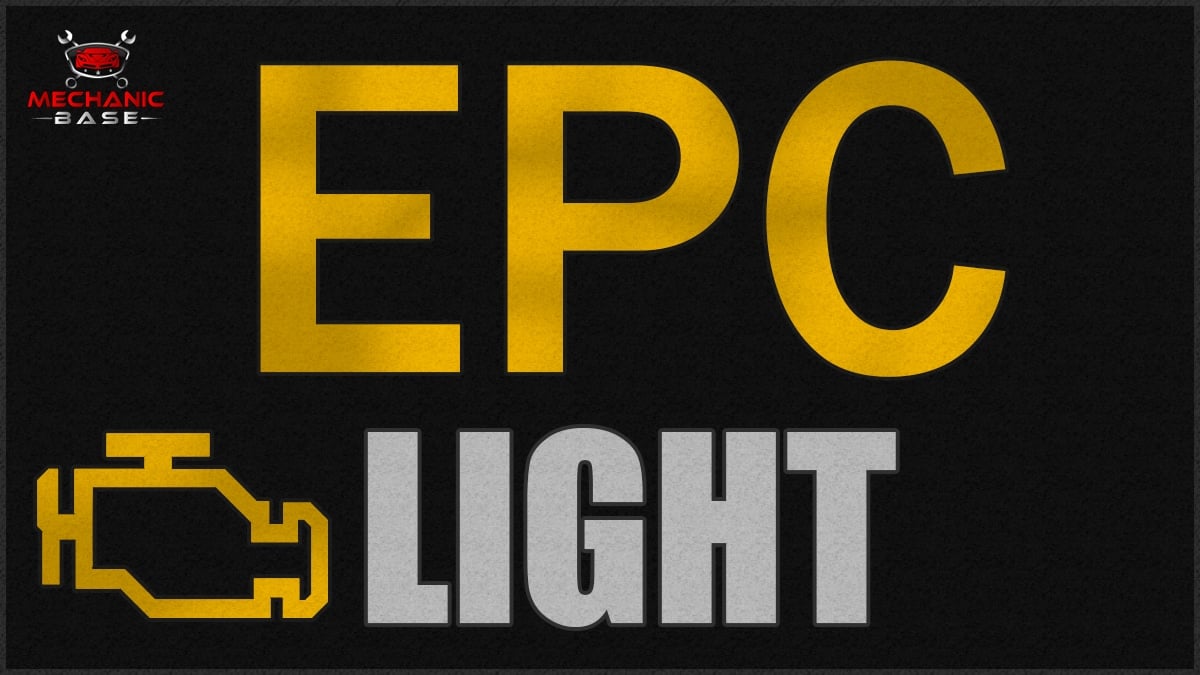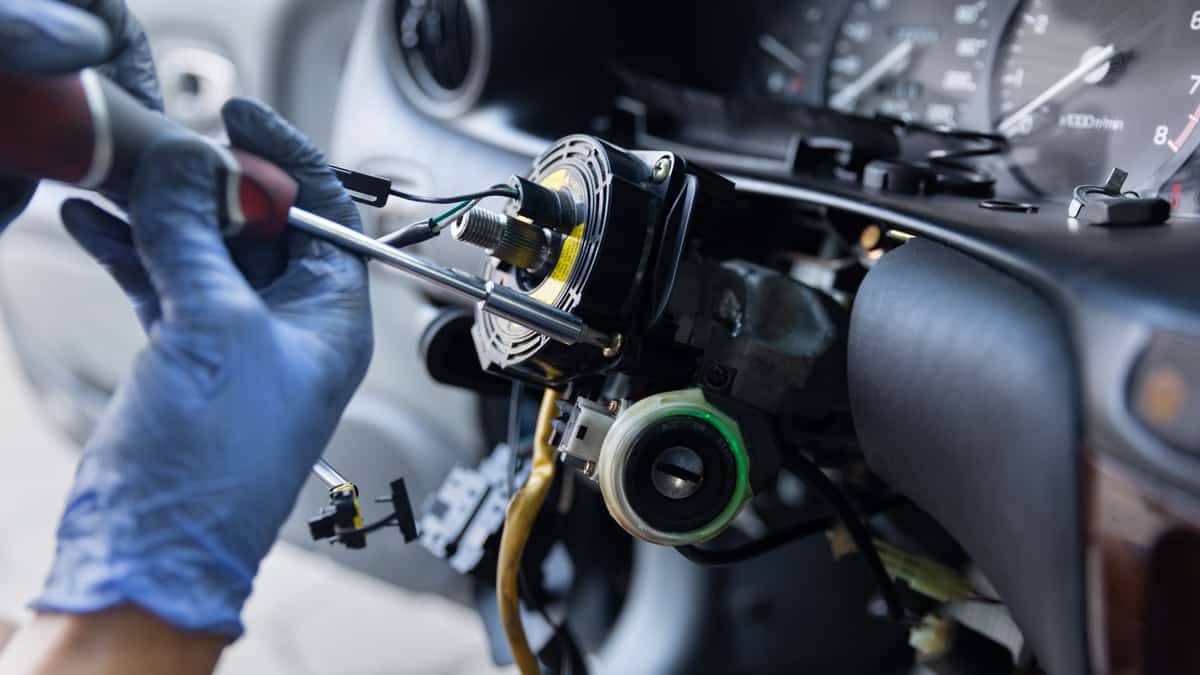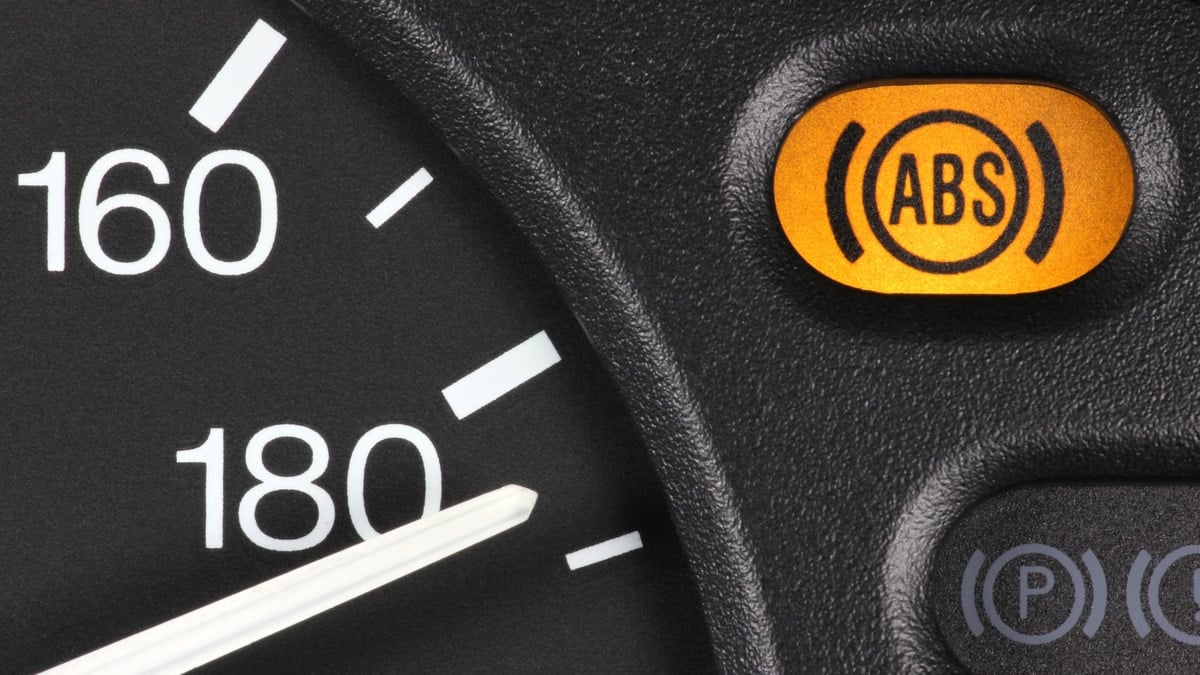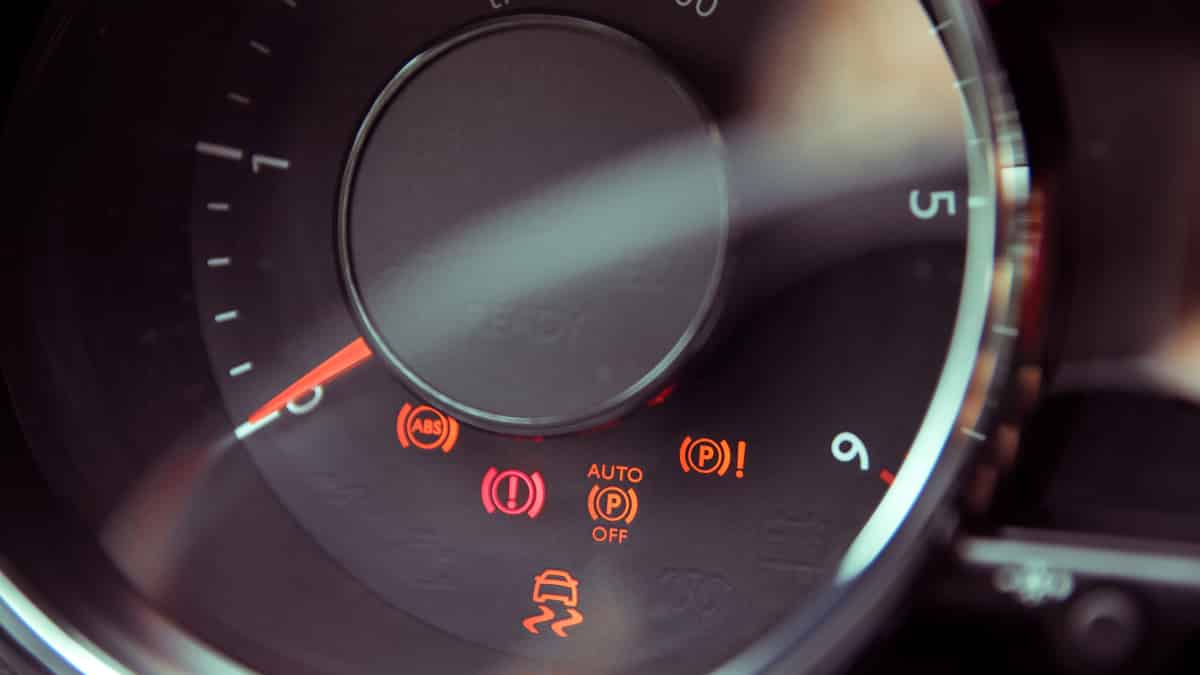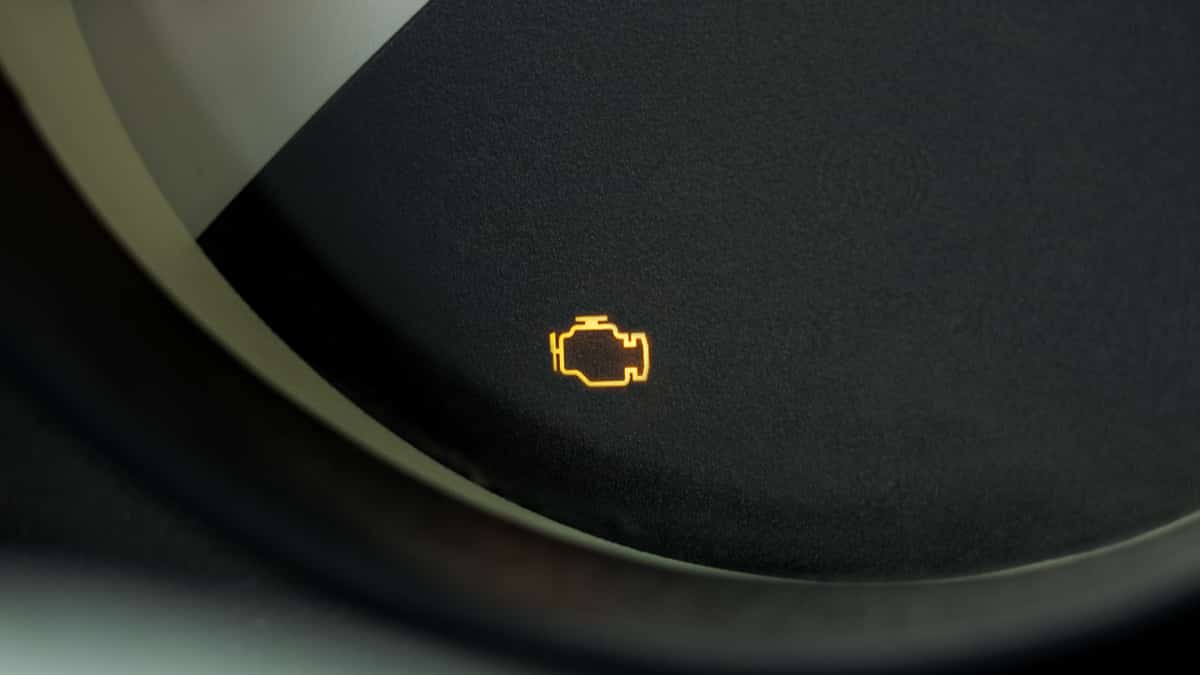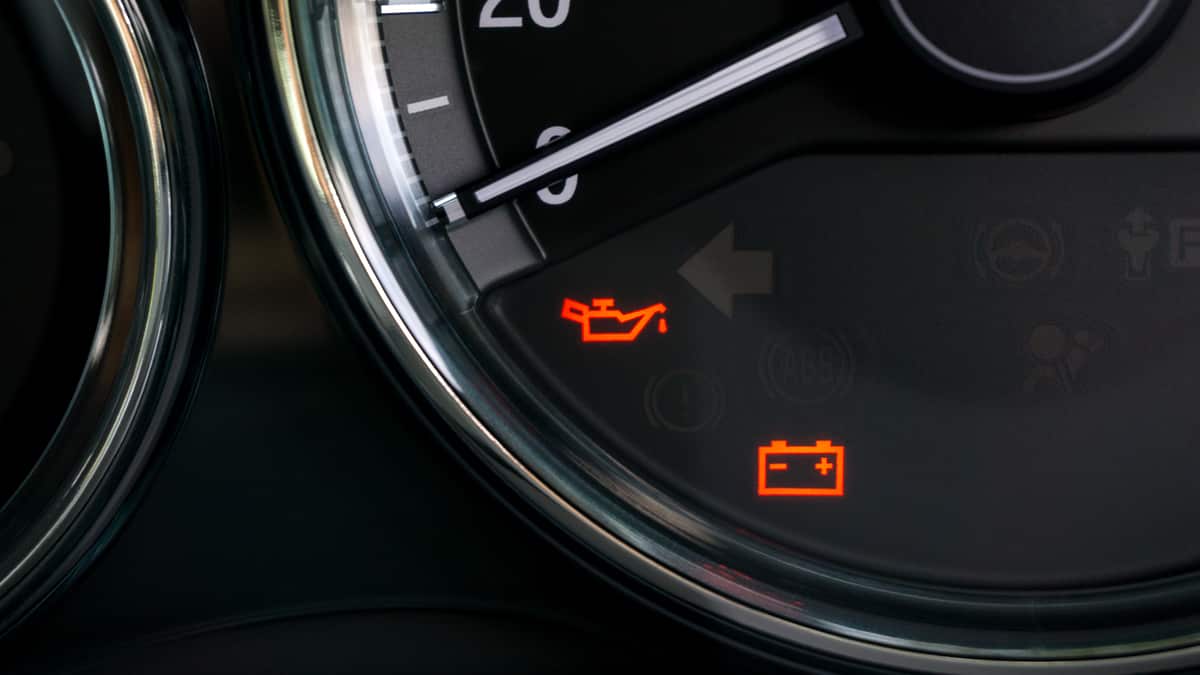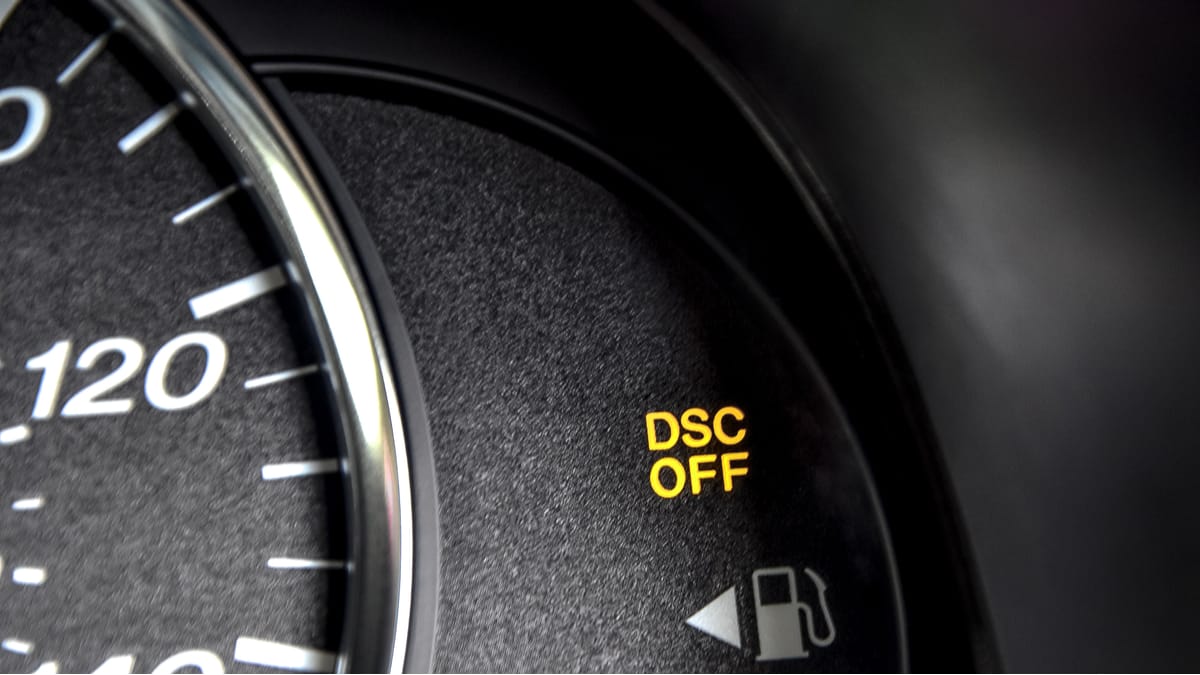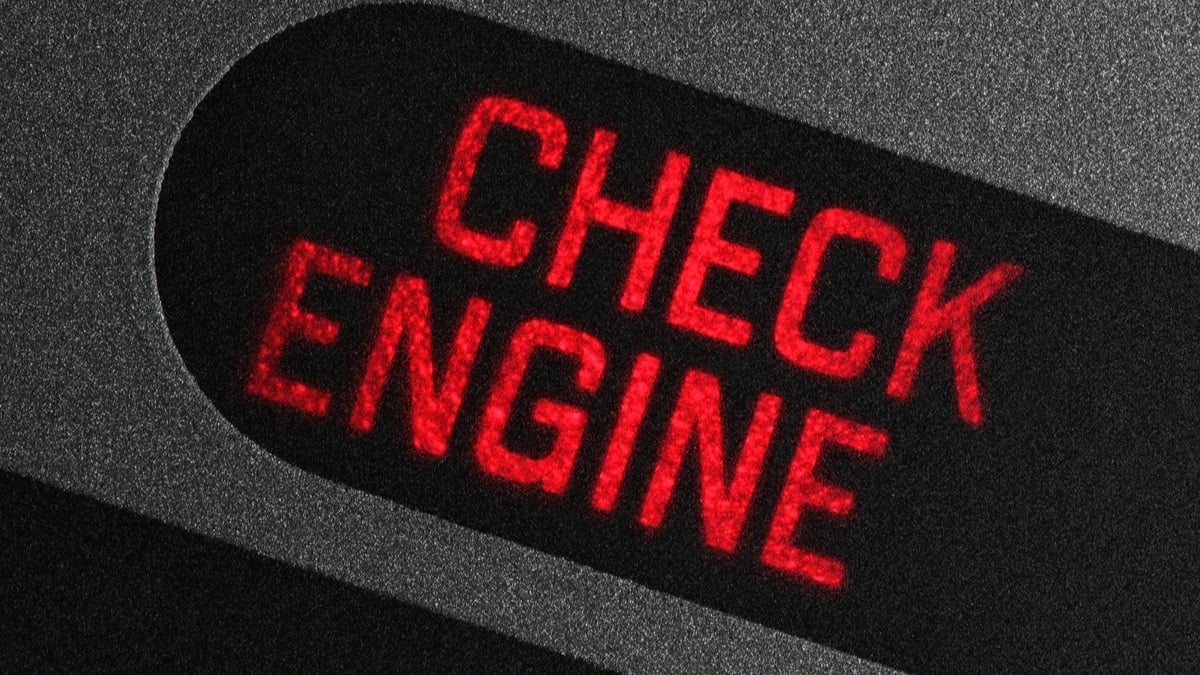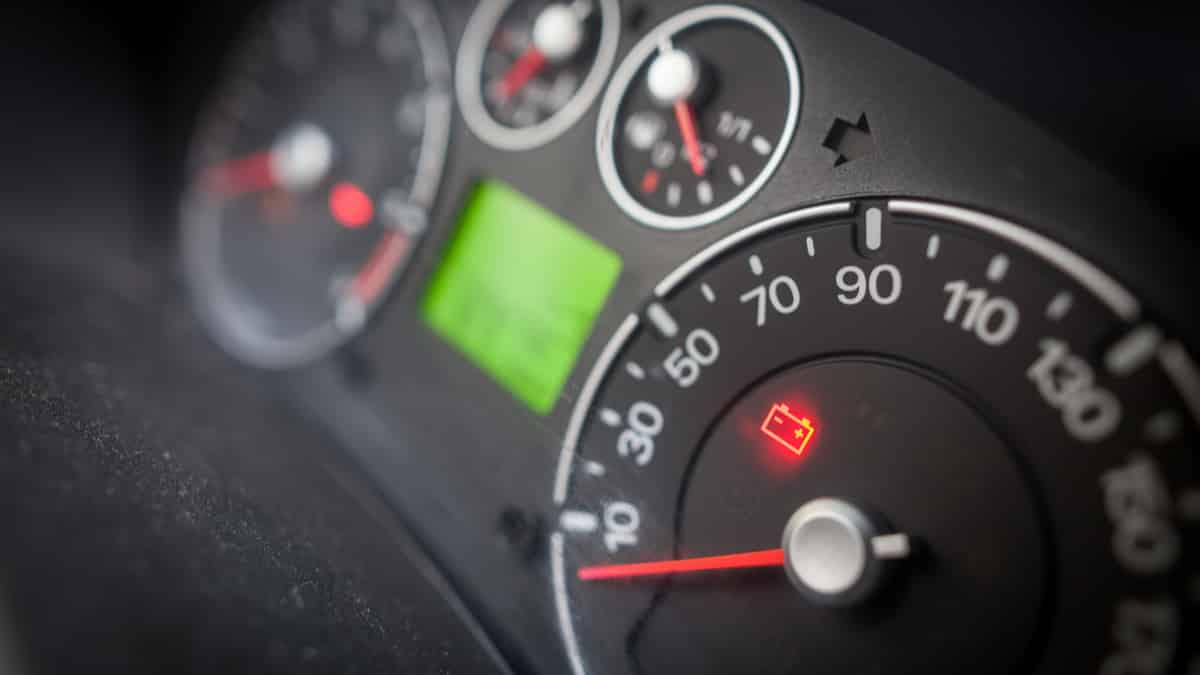If you own a Volkswagen or Audi, there’s a high probability you’ve encountered the EPC light illuminating on your car’s dashboard. Seeing this can be somewhat alarming, but what does the EPC light really mean?
The EPC light is a warning light that indicates a problem with your vehicle’s electronic power control (EPC) system. When this light comes on, it usually means there is an issue with the car’s throttle system.
Now that you have the quick answer let’s look more deeply into it. In this blog post, we’ll explore what the EPC light means, investigate the reasons it may come on, and guide you on how to address it. By the conclusion of this post, you’ll be well-equipped with the knowledge necessary to handle the situation if your EPC light illuminates. Continue reading to discover more!
What does the EPC Light mean?
The EPC light is a warning light related to your vehicle’s electronic power control (EPC) system. It means there is a trouble code stored in the EPC system.
The EPC light often shows up together with the Engine, ABS, or ESP Light, depending on where the problem is. The Electronic Power Control system is monitored by the engine control unit, brake control unit, transmission control unit, and steering control unit.
The EPC system is Volkswagen Group’s traction control system, and therefore you will also find the EPC system in Audi, Skoda and Seat car models.
RELATED: How Many Car Brands Does Volkswagen Own?
What Causes An EPC Light?
The most common causes of an EPC light are a faulty throttle body, a faulty ABS sensor, a cracked ABS ring, a bad brake pressure sensor, or a faulty brake pedal switch. It can also be caused by wiring issues or other electrical issues.
Here are a few of the issues that could trigger the EPC light:
1. Throttle body failure

The throttle body controls how much air should enter the engine when you press the gas pedal. The EPC system uses the throttle body to control the engine power, and if there is an issue with the throttle body, the EPC system will not be able to function properly.
Most throttle bodies today are electric, and if there is a problem with it, it will light up a check engine light and an EPC light on your dashboard.
RELATED: 8 Symptoms of a Bad Throttle Body (& Replacement Cost)
2. Failed Brake Pedal Switch
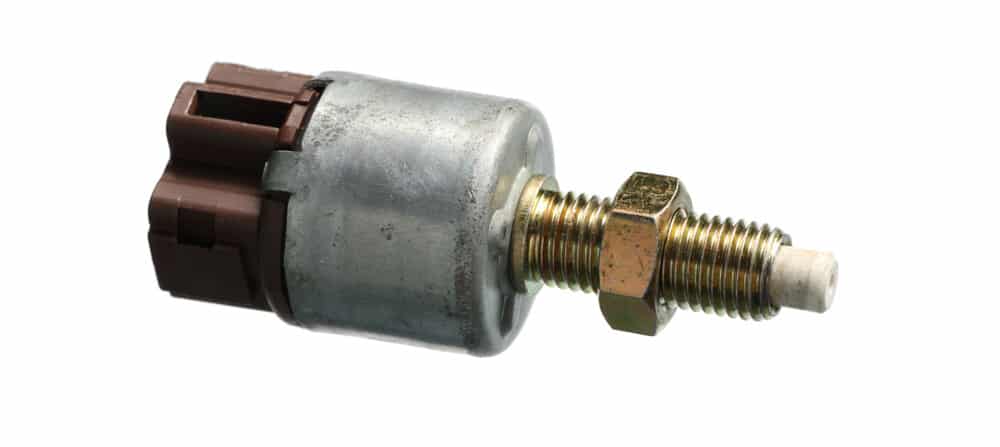
The brake pedal switch or brake light switch is used to know when you press the brake pedal, so the car should activate the brake lights. The switch is also used for other functions such as the cruise control system or the EPC system.
If there is a problem with the brake pedal switch, the EPC system will not be able to recognize when you press the brake pedal or not, and therefore it will illuminate the EPC light and store a fault code.
READ MORE: 5 Symptoms of a Bad Brake Light Switch (& Replacement Cost)
3. Bad ABS sensor
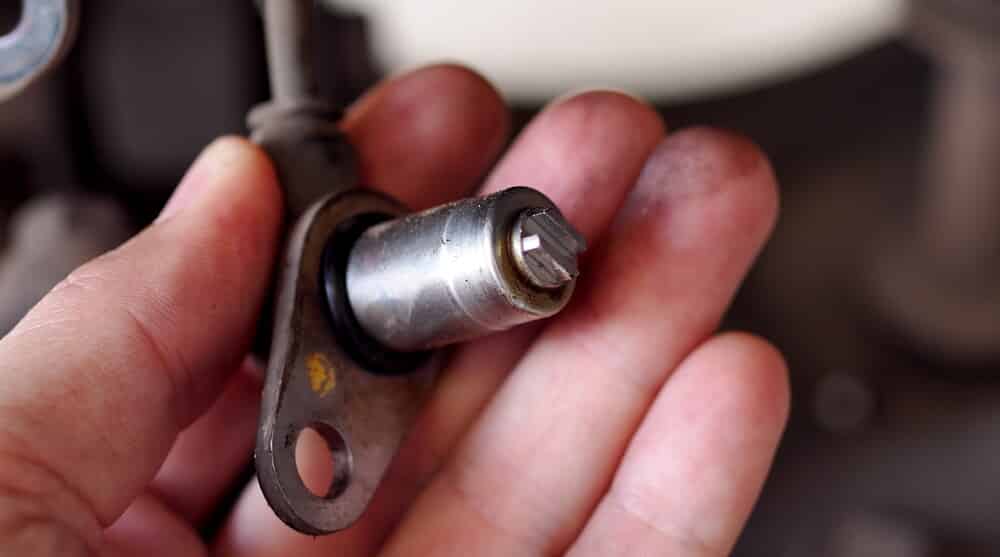
The ABS sensors measure the speed of each wheel on your car. It uses this information mainly for the ABS system, but there are other systems that use this information and the EPC system is one of them.
The ABS sensors are located on the wheel hubs and are very exposed to dirt, rust, and water, and are therefore prone to failure. It can also be an issue with the ABS reluctor ring, from which the ABS sensor is measuring the speed from.
READ MORE: 4 Signs of a Bad ABS Wheel Speed Sensor (Replacement Cost)
4. Failed brake pressure sensor

If you have a Volkswagen car and an EPC light on your dashboard, there is a high risk that the brake pressure sensor has failed. The brake pressure sensor works like the brake light switch, but it doesn’t just measure ON/OFF, it actually measures the brake pressure you apply through the brake pedal.
Unfortunately, the brake pressure sensor on many VW models is located inside the ABS control module, making it quite difficult to replace. Often you need to replace the entire ABS control module if there is a problem with the sensor, which can be very expensive.
5. A bad steering angle sensor
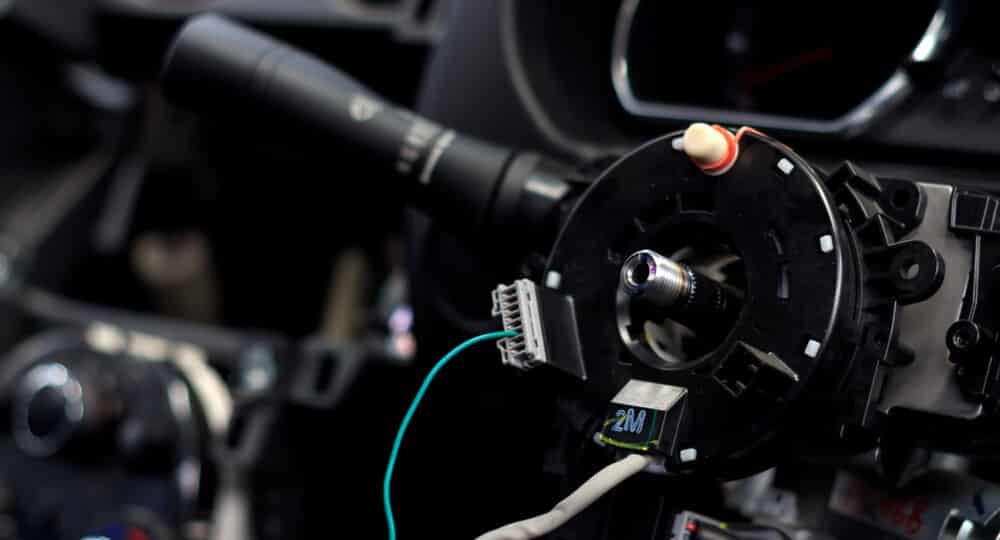
The steering angle sensor sits behind your steering wheel and is used to measure which position the steering wheel is in. The EPC system will use this information to determine which direction you turn the steering wheel and correct the brake force with this information.
To be able to turn the steering wheel, there is also a clock spring where the wires to the steering wheel angle sensor and the steering wheel buttons go. This clock spring is known to fail, and if it fails, it may look like a problem with the steering angle sensor.
RELATED: 4 Signs of a Bad Steering Angle Sensor (& Replacement Cost)
6. A Bad Engine Sensor

The EPC system uses a lot of different engine sensors to function properly, and if there is an issue with one of the engine sensors, it could result in an EPC light on your dashboard. It is therefore important to read the trouble codes when you see the EPC light to be able to pinpoint where the problem is.
Some of the engine sensors that can trigger the EPC light are the MAF sensor, the IAT sensor, the ECT sensor, or the O2 sensor. Keep reading to find out how to determine which of these sensors is causing the EPC light.
7. Wiring Issues
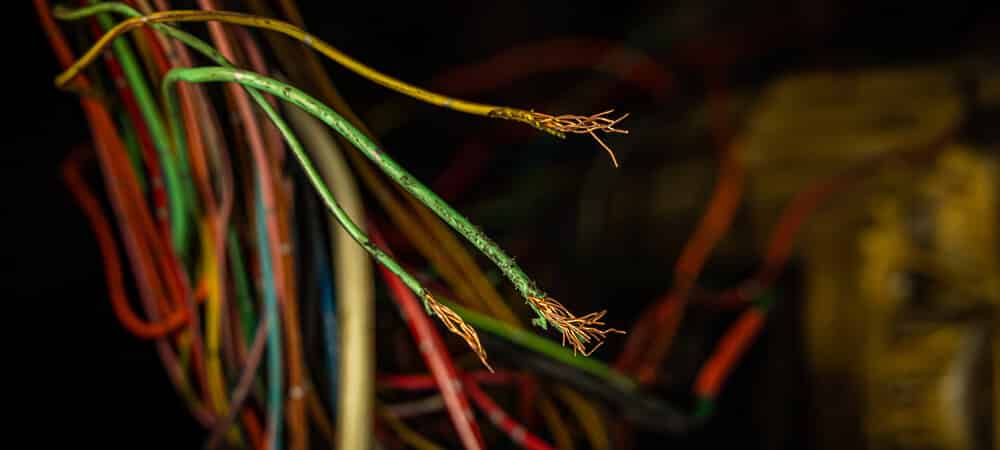
Because of all the electronic wiring in modern cars, there is a high risk that there is a wiring problem that is causing the EPC light. Unfortunately, wiring problems can be quite difficult to find unless you know exactly what you’re looking for.
The most common wiring problems are broken wires, corroded electrical contacts, or burnt contacts. If you’ve tried everything else on this list and don’t have the knowledge to diagnose the wiring, you may need to hire a professional.
RELATED: VSC Light – Meaning & Causes
How to fix the EPC light?
To fix the VW EPC light, you need to read the trouble codes with an OBD2 scanner. Once you know what the trouble codes are telling you, you need to continue to troubleshoot these codes. Just guessing the problem will only waste your money.
Here is more information about the steps you should take to fix your EPC light:
1. Check Trouble Codes
The first thing you should do when you have an EPC light on your dashboard is to read the trouble codes from the engine control module and ABS control module with an OBD2 scanner. When the EPC warning light is on, it means there are one or several trouble codes stored in one of these control units.
Modern car models have advanced on-board diagnostic systems, and if there is a warning light on your dashboard, it means that there is a fault code stored in one of the control modules. Instead of just guessing and replacing the wrong parts, you can save time and money by reading these error codes.
You have to scan the engine control unit, ABS control unit, steering control unit, and transmission control unit for any stored trouble codes. You can either take your car to a mechanic to let them read the trouble codes, or you can do it at home with your own OBD2 scanner.
However, the cheapest diagnostic scanners can only read the engine control module, and because this issue could appear in other control modules as well, it’s recommended to either get a more advanced diagnostic scanner or let a workshop read the other control units’ codes.
2. Check the brake light switch
The brake light switch is a common reason for the EPC light to come on, and it’s often quite easy to check. Just have someone press the brake pedal while you check the brake lights on your car. If there are no brake lights, the risk is high that the brake light switch is bad.
But in many car models, there are two different currents in the brake light switch, so even if the brake lights work, there is a chance that the switch is still bad. Therefore, it is better to diagnose it with a scan tool.
3. Check sensor data
If you have a diagnostic scanner but can’t find any good trouble codes to continue troubleshooting from, you need to check the sensor data. Check the values from the brake pressure sensor to ensure they appear realistic.
You will also want to check the sensor data from all other engine sensors and sensors related to the brake and EPC system.
4. Talk to a professional
EPC systems can be quite difficult to diagnose correctly without the right knowledge and tools. Therefore, if you did the basic things, but still can’t figure out what’s wrong, it may be time to contact a professional mechanic who has dealt with this problem before.
Although leaving it to a mechanic can be expensive, you will likely save money over simply guessing and replacing the wrong parts. If you want to fix the EPC light, you should definitely contact a Volkswagen or Audi workshop that has dealt with these issues before.
You do also want to check if there are any recalls or campaigns for your VW or Audi model.
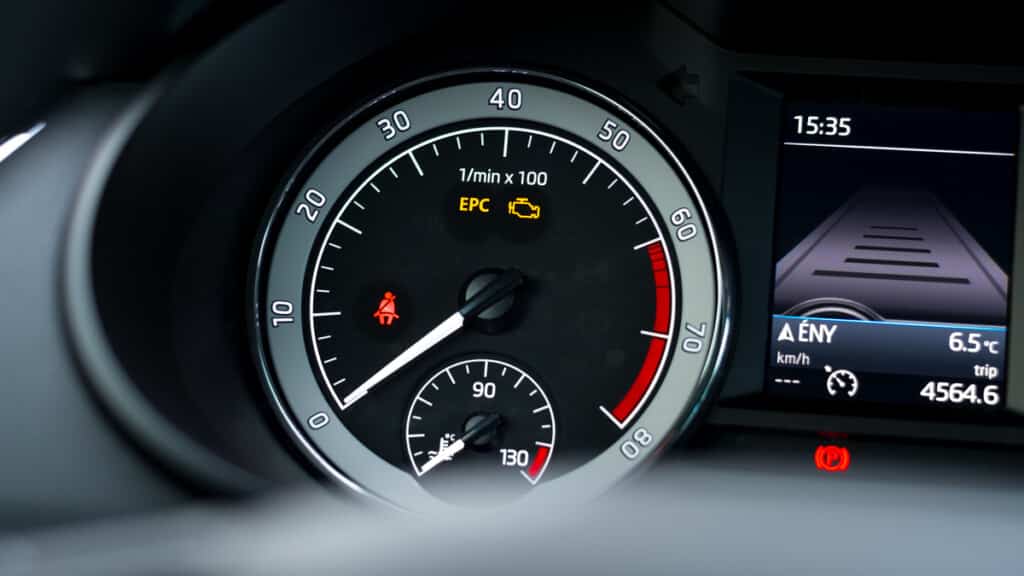
Is it dangerous to drive with the EPC light on?
Yes, it can be risky to drive with the EPC light on without knowing what is causing it to come on. Always fix the EPC problem as soon as possible. When the light is on, it means that there may be several restricted functions in your car.
Because the EPC system is integrated with the engine, steering, and brake system, it could cause engine damage or even cause a serious accident because of limited brake or steering functions. Therefore, when the EPC light appears on your dashboard, drive to the nearest mechanic repair shop as soon as possible.
Usually, the EPC system issue won’t cause damage to your car if you drive carefully, but the issue could be more severe in some cases, and therefore it’s best to check it up as soon as possible
Can a misfire cause an EPC light?
Yes, a misfire can cause the EPC light to come on indirectly. If the engine misfires, it will interfere with the engine’s performance, and in most cases, the check engine light will also come on. If there is a problem with the engine system, it can also trigger the EPC light.
Can the EPC Warning Light Cause a Loss of Power?
Yes, the EPC warning light controls the throttle system and can cause a sudden power loss. Sometimes, you can’t rev up the engine at all when the EPC light appears.
How much does it cost to fix the EPC light?
There is no fixed price to fix the EPC light because there are so many potential issues that could cause it. Usually, it will cost anything between $100 to $400 to fix the EPC light, but sometimes it can be more expensive.
Is the EPC light serious?
Yes, due to the variety of issues that can cause the EPC light to come on, your EPC light could be on due to a serious issue. Therefore, it is important to diagnose what is causing the light to come on before you continue to drive.
Although the EPC system seems quite simple, it is an advanced system that is integrated with many different systems, and therefore it can be quite difficult to pinpoint where the problem is.
Fortunately, with the information in this article, you should be able to properly begin a real diagnosis of why there is an EPC light on your dashboard and get rid of it without wasting your money. I hope this information helps you. Don’t forget to follow us on YouTube!
Learn more:
- 90 Car Dashboard Symbols, Warning Lights & Indicators – Meanings
- Traction Control Light (TCS): Meaning, Causes (& How to Fix)
- ESC Light – Meaning & Causes (How to Fix it)
Tags: Audi, sticky, Volkswagen
Categories: Engine, Warning Lights
